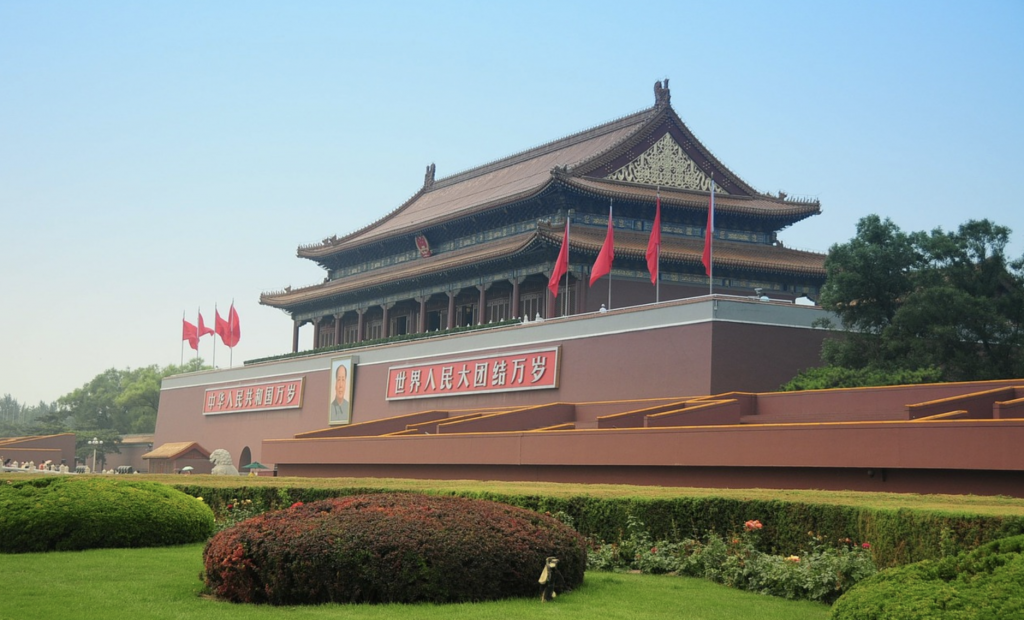
In the modern global political economy, China plays a key role by being a major player in international commodity chains, global value chains (GVCs), international trade, and modern finance. In fact, according to expert estimates, China is expected to become the largest economy in the world by 2028, surpassing the United States (US) . But this optimism on China’s rise did not always exist.
In the 1960s—during the height of the Cold War—China was an agrarian, relatively underdeveloped country isolated politically & economically from both poles of world power, i.e., the US and USSR. Beginning in the 1970s, China reconciled its differences with the US in the form of a détente, and was assisted by Pakistan in the materialization of the “Nixon in China” moment.
In 1971 China joined the United Nations (UN) as well, which marked the beginning of Chinese inclusion in the world political-economy, and by the 1990s, China had fully integrated into globalization by importing raw materials, exporting manufactured goods, offering inexpensive labor, and engaging in a wide range of commercial activity. Little wonder then, that in the period that followed, China boasted a Gross Domestic Product (GDP) growth rate that was in the double digits on average.
However, the financial crash of 2008 had a dilatory effect on Chinese economic growth as it arrested the aggregate demand in Western countries, which served as the main markets for Chinese products. By 2013, the Chinese GDP growth had slowed by 5 percentage points, indicating a clear divergence from the trajectory of the earlier two decades. Simultaneously, the Chinese financial system witnessed a huge build-up of liquidity as indicated by the M2 money supply, which increased from ¥ 40 trillion in 2008 to ¥ 182 trillion in 2018. Moreover, the M2 to GDP ratio grew to a whopping 200%—the highest in the world.
It is in this backdrop that the financialization of China has taken place as Chinese businessmen have pulled their capital out of industry and manufacturing—owing to comparatively low returns—and have started investing in the stock market, real estate, and other financial asset classes. From 2013 to 2018, this process further gained pace, and financial markets increasingly ‘crowded out’ the real economy. This is indicated by the reluctance of Chinese banks to lend to Small & Medium Enterprises (SMEs), industrial units, and manufacturing hubs, while preferring real estate enterprises, mutual funds, state-owned companies, and even clients with land or real estate to offer as collateral.
Thus, the Chinese economy started to look more and more like a ‘casino’ economy, and in the ensuing financial frenzy, the Chinese stock market crashed in 2015. The crash exerted enormous downward pressure on the value of the Chinese yuan, which the government had to stabilize by pumping $ 2 trillion in the open market.
The stock market crash prompted financial interest blocs to re-channel their investment from stocks towards real-estate. In the years since then, the value of the urban real estate has skyrocketed throughout China, disproportionately benefiting those who happen to own the best real estate assets, often due to the happenstance of being allocated such units during the Maoist era.
In fact, as of 2018, the total value of the real estate in seventy major cities of China stands at a staggering $65 trillion, which is greater than the value of all real estate of North America, Western Europe, and Japan combined! The value of the Chinese stock market, however, was only one-tenth of the total value of stock markets of these geographical entities in the same period.
The financialization of the Chinese economy, however, has resulted in substantial negative externalities for the Chinese people and government, one of which is the massive rise in the value of total debt. Consider the following fact: in 2000, the aggregate value of credit in the Chinese system stood at ¥9.9 trillion. In 2014, this figure swelled to ¥78.012 trillion, a rise of approximately 688%, while at the same time, the nominal GDP grew by only 473%. This again shows the crisis of excess liquidity in the Chinese financial system, which is continually being invested in the speculative economy, thus creating bubbles instead of creating sustainable jobs by being invested in the real economy.
The Chinese government has finally come to terms with the sinister effects of financialization and is starting to respond in a counter-cyclical manner, i.e., by promoting industrialization and arresting further financialization. This is articulated in the official Chinese policies of ‘Internal Circulation’, ‘Ecological Civilization’, and ‘Rural Revitalization’.
The policy of Internal Circulation is a realization on the part of the Chinese state that the stock market has failed to play its due role of facilitating the flow of liquidity from the financial markets to the real economy. To fill in the gap, the state has had to step in and jumpstart the stalled economy by promoting investments in various fields.
For instance, in 2020, the Chinese local governments invested a massive ¥34 trillion in ‘new’ infrastructure projects such as the 5G, industrial internet, data centers, satellite systems, artificial intelligence (AI), and so on. At the same time, the policies of Ecological Civilization and Rural Revitalization call for building an eco-economy featuring high economic growth and sustainable development, with a special focus on the countryside, while strictly eschewing Western neoliberalism. Hence the slogan: “A Green mountain is a gold mountain; a clean river is a silver river”. In this context, then it becomes evident that the Chinese state has wisely adopted sound policy alternatives to deal with the growing scourge of financialization of its economy. It appears that the Communist Party of China (CPC) has learned the right lessons, just in time, from the West, where unfettered neoliberalism in the form of incessant deindustrialization and deeper financialization have created an economy, which is continually facilitating the rise of spiteful right-wing forces, who are fueling xenophobia and racism, thus further polarizing already fractured societies.




Be the first to comment